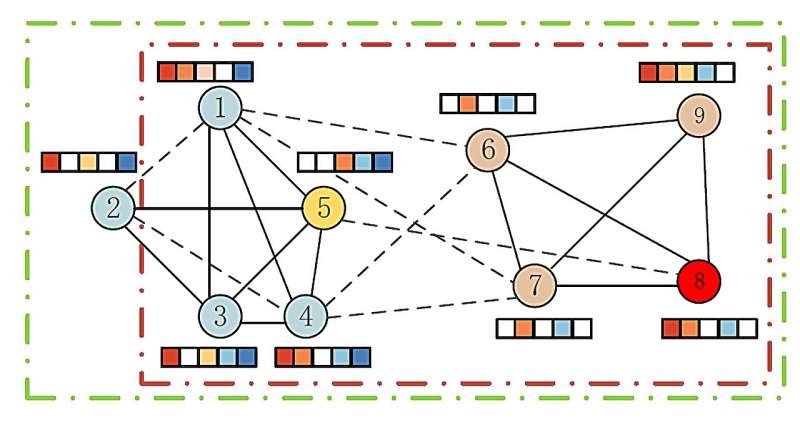This article has been reviewed according to Science X's editorial process and policies. Editors have highlighted the following attributes while ensuring the content's credibility:
fact-checked
proofread
Adaptive fusion of structure and attribute-guided polarized communities search

The exploration of polarized communities, which consist of two antagonistic subgraphs and include a set of query nodes, is a crucial task in community search on signed networks. Most existing methods either predominantly rely on topological structure while disregarding node attributes or tend to prioritize the global identification of all polarized communities. Thus, they fail to consider two crucial insights.
First, integrating node attributes with network structure can enhance the search quality for polarized communities in attributed signed networks by leveraging complementary information. Second, global criteria-based polarized community detection aims to identify all polarized communities, neglecting personalized analyses centered around individual users.
To solve the problems, a research team led by Huifang Ma published their research in Frontiers of Computer Science.
The research team introduced a novel community search framework termed "Polarized Communities via Adaptively Fusing Structure and Attribute in Attributed Signed Networks." Their approach starts by performing statistical analyses on the signed graph at the attribute level, establishing associations with the topological relationships.
Subsequently, an adaptive fusion mechanism of the topological structure and attribute information is introduced. In order to detect polarized communities that include query nodes, a sparse indicator-vector is formulated based on the generalized Rayleigh quotient in local spectral eigenspaces, achieved by solving a linear programming problem.
More information: Fanyi Yang et al, Adaptive fusion of structure and attribute guided polarized communities search, Frontiers of Computer Science (2023). DOI: 10.1007/s11704-023-2776-7





















